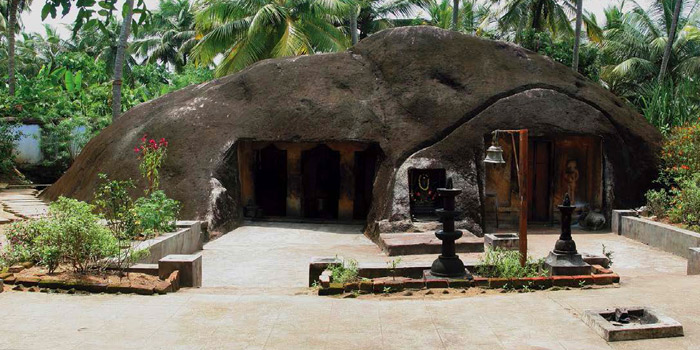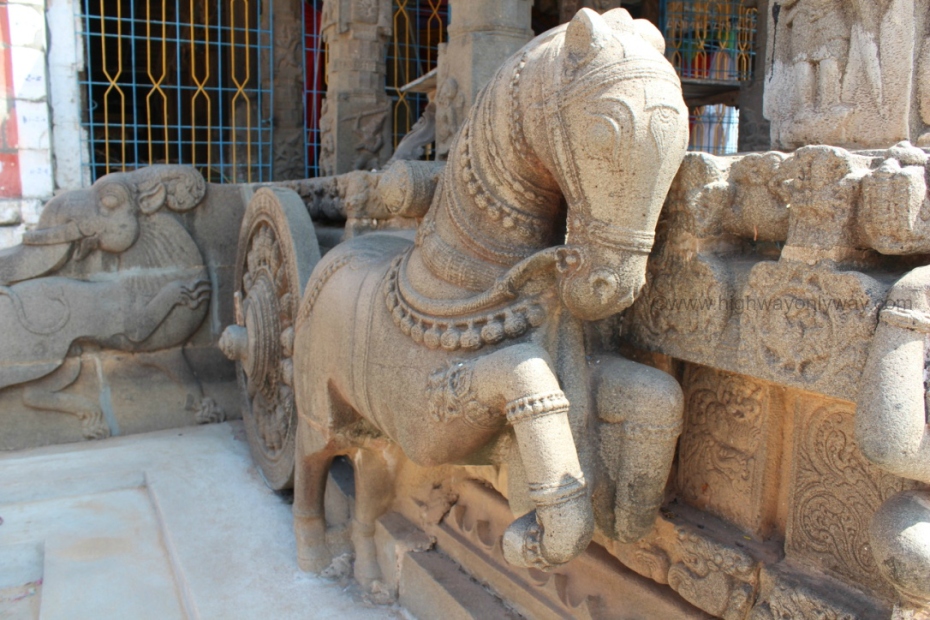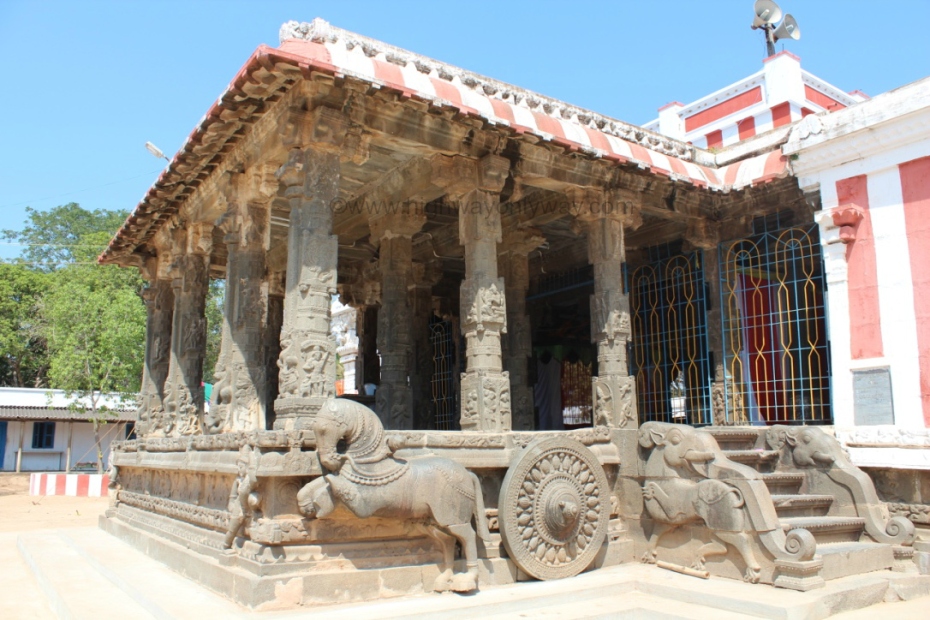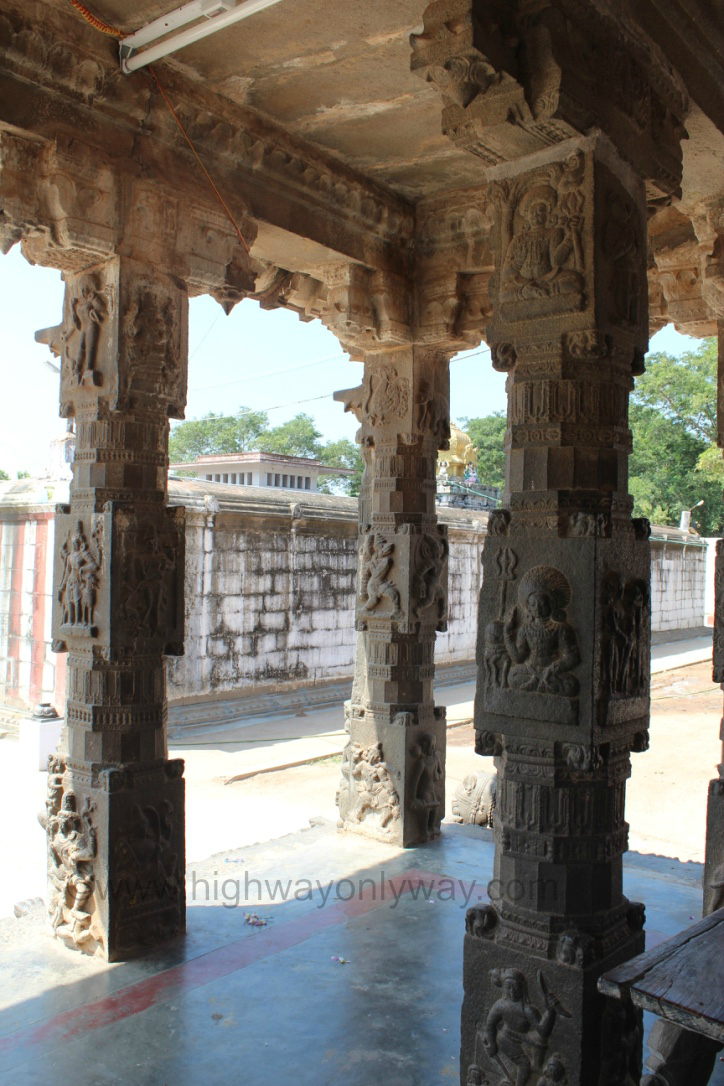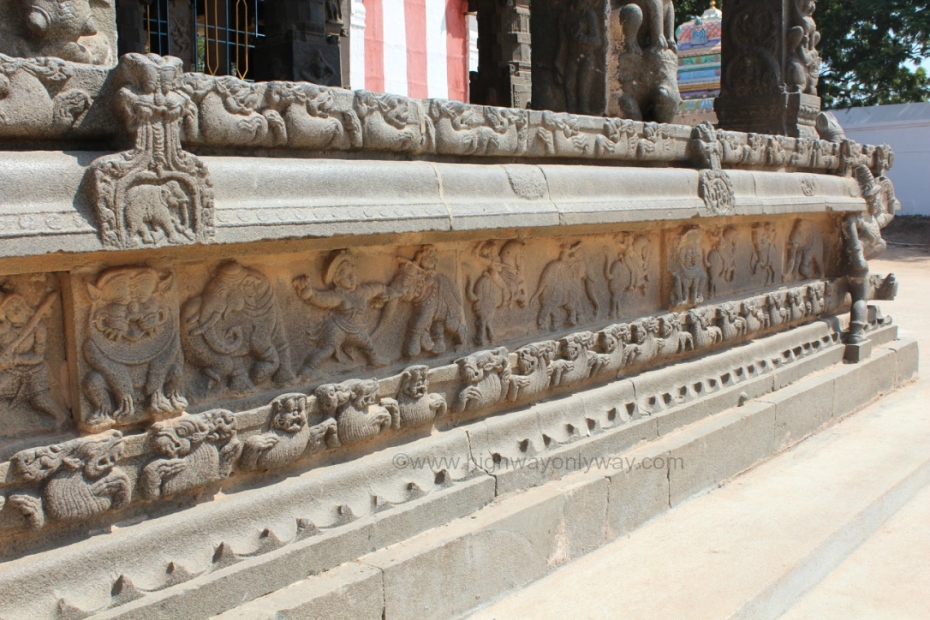



Thrikkakudi rock cut cave temple is located about one km. north-east of Kaviyoor village, Thiruvalla taluk, Pathanamthitta district, Kerala, India PIN 689582. The rock cut cave is located at a distance of 29 km from Pathanamthitta and 6 km from Thiruvalla, The meaning of the village name is like this: Thiru - kal - kudy’ that means - ‘sacred dwelling place in rock.’ The cave temple was renovated by Travancore Devaswom Board (TDB) and the board maintains with one daily morning pooja rituals.
Kaviyur, a village panchayat, located on the western bank of the river Manimala, was a part of Nanruzhai Nadu which had its capital in what is now Thrikkodithanam, 9 km west of Kaviyoor. The Mahadeva temple of Kaviyoor, built in 10th century A.D, is considered as one of the ancient Shiva (Mahadeva) temples in Kerala. Inscription dated 950 A.D. speak about gifts offered to this temple. The village is one of the ancient 64 brahmin settlements of Kerala. The geographical coordinates Kaviyoor is Latitude 9°23′0″North (9.3920848) and Longitude 76°36′0″East (76.6192022) and the elevation / altitude is from 8m to 61m.
The south facing Thrikkakudi rock cut cave consists of a facade, a rectangular mukha-mandapam and a sanctum. It is very skillfully cut into dome shaped roof. The plinth is plain and the cave floor little higher in level from the ground floor. A flight of four steps leads to the mukha-mandapam. The facade consists of two massive pillars in the middle and pilaster on both ends with the features of square, octagonal kattu and square. The walls are simple and plain with six foot high floor. The rough rock brow is bereft of any curved cornice moulding called 'kapota' (overhanging cornice) or drip line for rainwater.
The temple dedicated to Lord Shiva. The ten foot high and seven-foot square sanctum houses 3 feet tall Shiva lingam. The bas relief image at the door way represents Bhima, the Pandava prince of Mahabharatha. Also there are bas relifs of Lord Ganapathi and the sage. The sanctum is guarded by imposing bas relief images of Dwarapalakas. The niches, on the outer wall on either side of the entrance of the sanctum, houses these Dwarapalakas.. It is inferred by scholars that this cave temple was constructed in the Pallava architectural style and may be datable to 8th century. The natural pond amidst two rocks is another attraction. The rock-cut monument is protected by the Archaeological Department.
One version of the legend says that the rock cut monument was built by demons within one night. It is also believed that Lord Shiva and Hanuman of Kaviyur Mahadeva temple appeared here to interrupt the task of temple construction. The demons had to flee to save their lives. Another version says that the Pandavas of Mahabharatha dwelled in this cave during their exile in the forests.
In the words of Unnikrishnan, an archaeologist of repute, Thrikkakudi rock cut cave temple might have been a Buddhist vihara centuries ago. It is evident that Buddhism and Jainism flourished in this location before 10th century A.D.
Thiruvalla is well connected to other major cities of the country via regular buses. Kozhikode, Thiruvananthapuram, Kollam Kannur, Kochi , Coimbatore , Chennai, Madurai, Bangalore and Mangalore are connected from Thiruvalla through road.
Nearest Railway Station: The town has its own Railway Station named as Thiruvalla Railway Station. It is about 5 km from Kaviyoor.
Nearest Airport: Thiruvananthapuram International Airport, about 119 km from Pathanamthitta.
Reference
Kaviyur, a village panchayat, located on the western bank of the river Manimala, was a part of Nanruzhai Nadu which had its capital in what is now Thrikkodithanam, 9 km west of Kaviyoor. The Mahadeva temple of Kaviyoor, built in 10th century A.D, is considered as one of the ancient Shiva (Mahadeva) temples in Kerala. Inscription dated 950 A.D. speak about gifts offered to this temple. The village is one of the ancient 64 brahmin settlements of Kerala. The geographical coordinates Kaviyoor is Latitude 9°23′0″North (9.3920848) and Longitude 76°36′0″East (76.6192022) and the elevation / altitude is from 8m to 61m.
The south facing Thrikkakudi rock cut cave consists of a facade, a rectangular mukha-mandapam and a sanctum. It is very skillfully cut into dome shaped roof. The plinth is plain and the cave floor little higher in level from the ground floor. A flight of four steps leads to the mukha-mandapam. The facade consists of two massive pillars in the middle and pilaster on both ends with the features of square, octagonal kattu and square. The walls are simple and plain with six foot high floor. The rough rock brow is bereft of any curved cornice moulding called 'kapota' (overhanging cornice) or drip line for rainwater.
The temple dedicated to Lord Shiva. The ten foot high and seven-foot square sanctum houses 3 feet tall Shiva lingam. The bas relief image at the door way represents Bhima, the Pandava prince of Mahabharatha. Also there are bas relifs of Lord Ganapathi and the sage. The sanctum is guarded by imposing bas relief images of Dwarapalakas. The niches, on the outer wall on either side of the entrance of the sanctum, houses these Dwarapalakas.. It is inferred by scholars that this cave temple was constructed in the Pallava architectural style and may be datable to 8th century. The natural pond amidst two rocks is another attraction. The rock-cut monument is protected by the Archaeological Department.
One version of the legend says that the rock cut monument was built by demons within one night. It is also believed that Lord Shiva and Hanuman of Kaviyur Mahadeva temple appeared here to interrupt the task of temple construction. The demons had to flee to save their lives. Another version says that the Pandavas of Mahabharatha dwelled in this cave during their exile in the forests.
In the words of Unnikrishnan, an archaeologist of repute, Thrikkakudi rock cut cave temple might have been a Buddhist vihara centuries ago. It is evident that Buddhism and Jainism flourished in this location before 10th century A.D.
Thiruvalla is well connected to other major cities of the country via regular buses. Kozhikode, Thiruvananthapuram, Kollam Kannur, Kochi , Coimbatore , Chennai, Madurai, Bangalore and Mangalore are connected from Thiruvalla through road.
Nearest Railway Station: The town has its own Railway Station named as Thiruvalla Railway Station. It is about 5 km from Kaviyoor.
Nearest Airport: Thiruvananthapuram International Airport, about 119 km from Pathanamthitta.
Reference
- Kaviyuur. Mathrubhumi (English) 31 May 2008.
- Kaviyoor Ente Gramam. Fa
- Rock-cut temple at Kaviyur, relics of a bygone age. Radhakrishnan Kuttoor. The Hindu. July 10, 2013.
- Remnants of a Bygone Era: Rock-Cut Temple at Kaviyur. Hithokthi.com
- Thrikkakkudy temple, where time stands still. The Hindu. March 23, 2015.
YouTube videos
